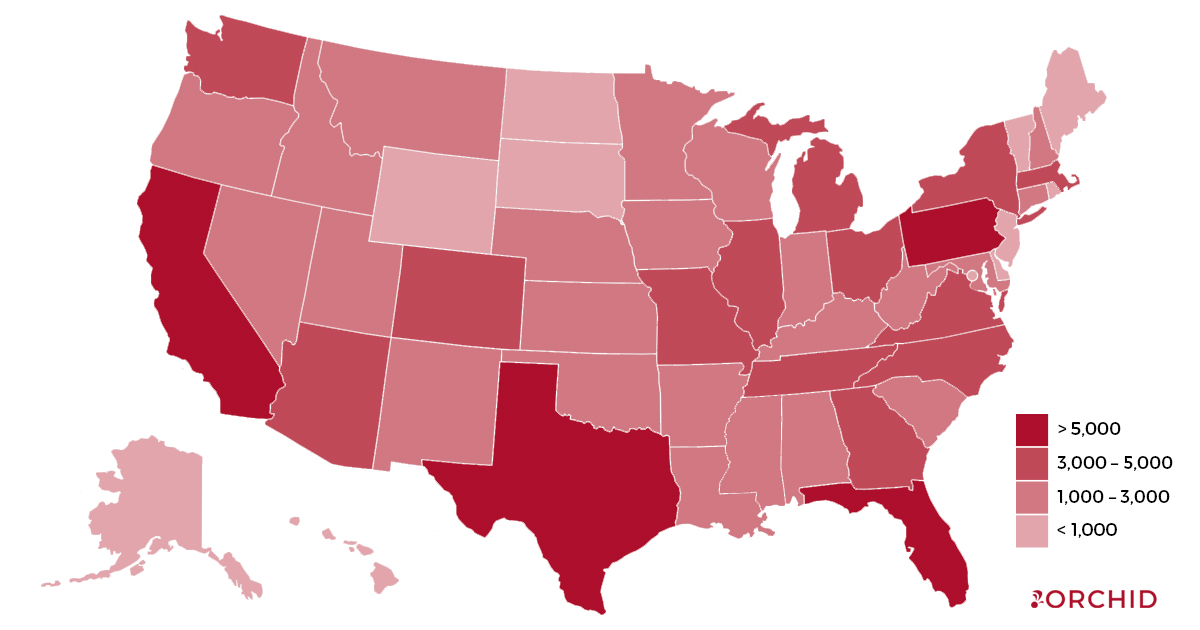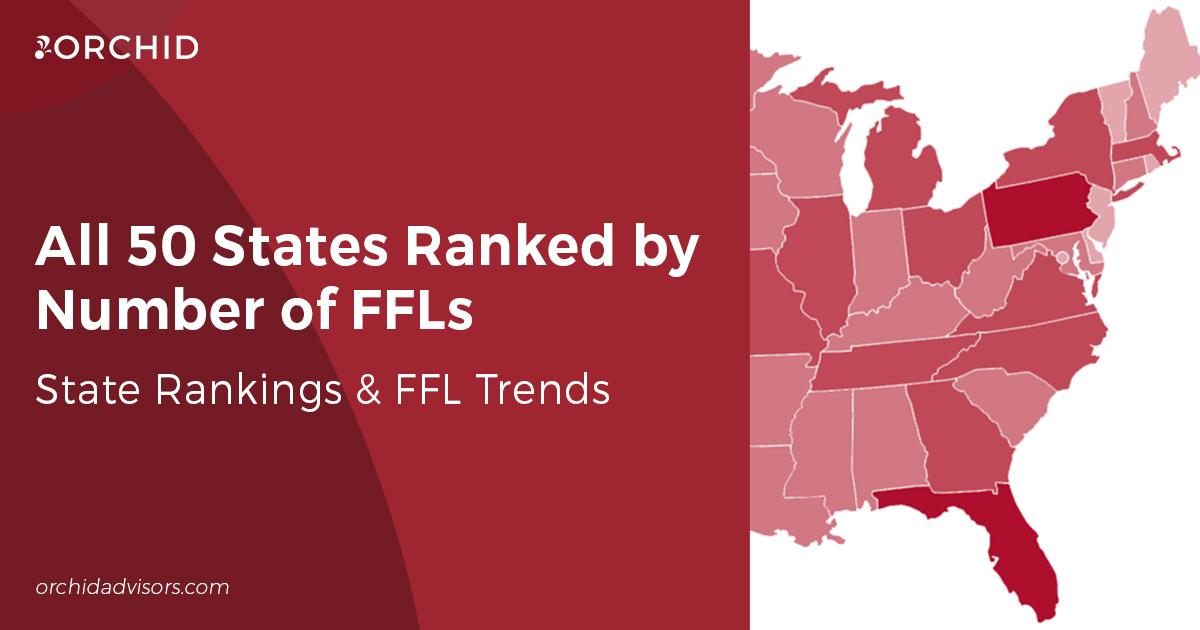To operate in the firearms industry, you first need a Federal Firearms License (FFL). There are nine different types of FFLs falling under four general categories – retailers, manufacturers, importers and collectors. Responsible for issuing and reviewing firearms licenses, the ATF Federal Firearms Licensing Center produces monthly reports of active licenses by type within each U.S. state and territory.
As of July 2021, there were exactly 134,000 active FFLs with an additional 2,700 pending application. Of those, the greatest number of active licenses are related to firearm dealers (45%), with collectors (40%), manufacturers (14%) and importers (1%) making up the rest. However, these numbers don’t tell the whole story.
First, it’s possible for one FFL to possess multiple licenses. For example, Smith & Wesson both manufactures and imports firearms, while Kimber requires multiple FFLs to operate in multiple states. Second, Type 03 FFLs are the easiest to obtain, as they only allow for transferring and shipping of curios and relics. Lastly, numbers fluctuate monthly as new FFLs enter the market and existing licenses are either not renewed or revoked. As a comparison, active FFLs totaled roughly 132,000 in January 2021.
Now with some context, let’s look at FFL trends and where all 50 states rank.

Number of active FFLs per state (Data: July 2021)
FFL Trends
Dealer Decline
According to the ATF’s annual “Firearms Commerce in the U.S.” report, the agency has tracked active FFLs since at least 1975. Nearly 50 years later, the industry has gone through tremendous changes – down nearly 28,000 FFLs from 1975 (162,000 FFLs) and 150,000 from the high of 1992 (284,000).
Most notable is the decline of Type 01 FFLs, once 87% of all FFLs in 1992. Today, firearms dealers make up just 40%, with the number of active FFL retailers falling 6.5% in the last five years in large part due to market consolidation and the growth of eCommerce.
Countering dealer decline, firearms manufacturers and collectors have grown significantly since 1975, increasing more than 4,000% and 900%, respectively.
Population Matters
They say everything is bigger in Texas, and when it comes to FFLs, that holds true. Texas leads all states in active FFLs, followed by California, Florida and Pennsylvania, who all rank among the top five states in U.S. population, according to 2020 census data. This should come as no surprise, though, as larger populations will generate greater interest in firearms licenses.
Combined, the four states make up 25% of all FFLs in the U.S. Individually, Texas is home to the most Type 01 FFLs (4,951), California to the most Type 03 FFLs (6,280) and Florida to the most dealers, manufacturers and importers of destructive devices (105).
At the other end of the list, Delaware, Vermont and Rhode Island are three of the lowest ranking states in both active FFLs and population. Only Hawaii and the nation’s capital rank lower in total FFLs, which can be attributed more to state/local regulations on firearms and firearms licenses than their population size.
The “Wild West”
Given their “Wild West” reputation, one might expect states in the Western region of the U.S. to rank high in firearms licenses, but we find that’s not necessarily the case. Based on official census regions and divisions, only Western states of Arizona, California, Colorado and Washington have more than 3,000 FFLs. Remove Pacific states and the list shrinks to just two. Of course, low population density of many Western states is a major contributing factor.
Opposite the country, South Atlantic states of Florida, Georgia, Virginia and the Carolinas are home to nearly 22,000 combined FFLs (16%), while New England is host to multiple major firearm manufacturers and 8,500 FFLs despite having some of the most restrictive gun laws in the country.
Continental Divide
The “continental United States” refers to the 49 states – including Alaska and Washington, D.C. – located in North America, excluding Hawaii and five U.S. territories. Yet, despite being regulated by the ATF like mainland states, these islands rank among the lowest in active FFLs.
In total, the Mariana Islands, Virgin Islands, Guam, Puerto Rico and Hawaii combine for 356 FFLs, or roughly the same number of Type 07 FFLs in Tennessee alone.
FFL State Rankings
Below are the rankings of each state and U.S. territory by the number of active FFLs as of July 2021. Population ranking using 2020 census data is also included for further context.







0 Comments